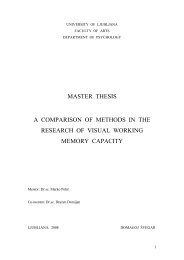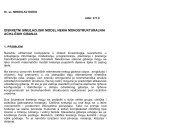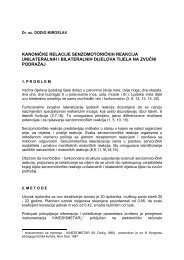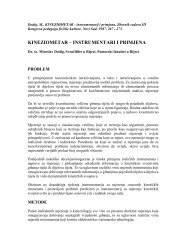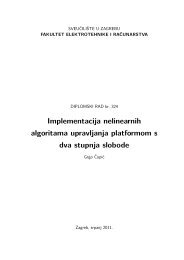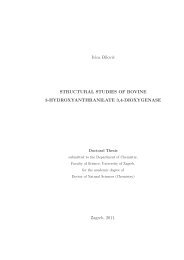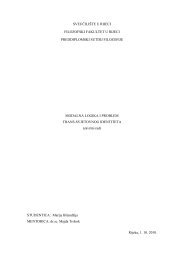Investigating Macroeconomic Determinants of Happiness in ...
Investigating Macroeconomic Determinants of Happiness in ...
Investigating Macroeconomic Determinants of Happiness in ...
You also want an ePaper? Increase the reach of your titles
YUMPU automatically turns print PDFs into web optimized ePapers that Google loves.
goods and services, <strong>in</strong>vestments and transfers provided by the government. Namely, we<br />
hypothesise that government expenditure <strong>in</strong>fluences happ<strong>in</strong>ess positively up to a certa<strong>in</strong><br />
threshold 3 , and negatively afterwards. To clarify the issue even more, <strong>in</strong> our op<strong>in</strong>ion the<br />
negative effect <strong>of</strong> government expenditure on happ<strong>in</strong>ess stems only from the excess/wasteful<br />
amount <strong>of</strong> government expenditure. There is no reason to assume that the ‘useful’ amount <strong>of</strong><br />
government expenditures also impacts happ<strong>in</strong>ess negatively. Because <strong>of</strong> this we believe it is<br />
reasonable to <strong>in</strong>clude both the level and the square <strong>of</strong> the government expenditure <strong>in</strong> the<br />
regression, <strong>in</strong> order to test whether the relationship between these expenditures and happ<strong>in</strong>ess<br />
is <strong>in</strong>versely U-shaped.<br />
As a practical note, it should be stressed that with<strong>in</strong> the literature there is a particular<br />
concern as how to def<strong>in</strong>e and properly measure the public sector size. This is where the<br />
difficulties beg<strong>in</strong>, as there is no clear-cut answer as to what the public sector is. Papers on the<br />
topic typically use data on government consumption only, due to poor quality and frequent<br />
methodological changes <strong>of</strong> data on government <strong>in</strong>vestments, welfare spend<strong>in</strong>g, subsidies and<br />
transfers. The latter would reflect the size <strong>of</strong> public sector more precisely, but do to data<br />
limitations <strong>in</strong> our empirical analyses we also use just government consumption.<br />
5. Empirical analysis <strong>of</strong> the impact <strong>of</strong> macroeconomic variables on<br />
happ<strong>in</strong>ess<br />
In this section we empirically <strong>in</strong>vestigate the determ<strong>in</strong>ants <strong>of</strong> happ<strong>in</strong>ess <strong>in</strong> a set <strong>of</strong> 13<br />
transition countries with special attention given to country-level - macroeconomic<br />
determ<strong>in</strong>ants.<br />
Data description<br />
The data used is from the World Values Survey, waves 3, 4 and 5 and <strong>in</strong>cludes the<br />
follow<strong>in</strong>g countries: Albania, Bulgaria, Croatia, Czech Republic, Estonia, Hungary, Latvia,<br />
Lithuania, Poland, Romania, Slovakia, Slovenia and Macedonia. The ma<strong>in</strong> idea was to<br />
<strong>in</strong>vestigate macroeconomic determ<strong>in</strong>ants <strong>of</strong> happ<strong>in</strong>ess <strong>in</strong>, rarely analysed, Central and Eastern<br />
European countries. These would additionally <strong>in</strong>clude Bosnia and Herzegov<strong>in</strong>a and Serbia<br />
and Montenegro, but, due to data limitations, we had to exclude the former two countries<br />
3 We do not attempt to assess this threshold <strong>in</strong> more detail, but rather use this l<strong>in</strong>e <strong>of</strong> reason<strong>in</strong>g to justify the nonl<strong>in</strong>ear<br />
<strong>in</strong>clusion <strong>of</strong> the government expenditure variable <strong>in</strong> the regression.<br />
11




